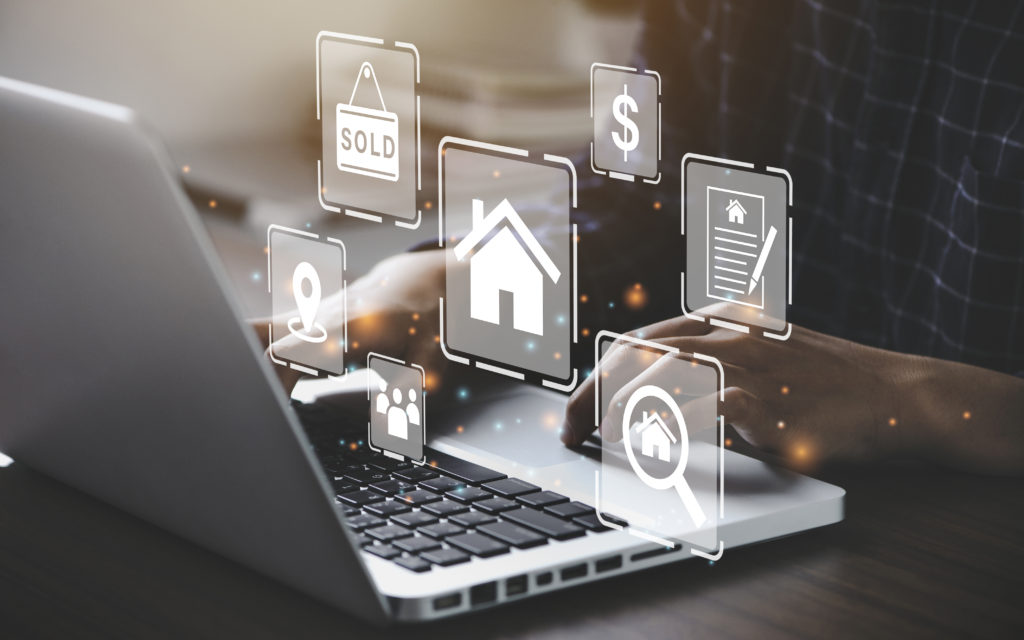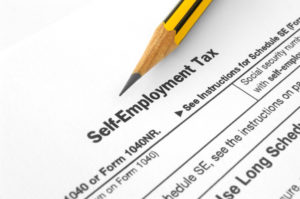Tax Savings Tips
Make Sure You Grab Your Home Internet Deduction
If you do some work at home, you’re probably using your home internet connection. Are your monthly internet expenses deductible? Maybe.
The deduction rules depend on your choice of business entity (proprietorship, corporation, or partnership).
Deduction on Schedule C
If you operate your business as a sole proprietorship or as a single-member LLC, you file a Schedule C to report your business income and expenses. As a Schedule C taxpayer, you may deduct ordinary and necessary expenses, which include business-related internet subscription fees.
You can deduct your use of your home internet whether or not you claim the home-office deduction, as follows:
- If you claim the home-office deduction on your Form 1040, the internet expense goes on line 21 (utilities) of IRS Form 8829 as either a direct or an indirect expense.
- If you do not claim the home-office deduction, enter the business portion of your internet expenses as utilities expenses on line 25 of your Schedule C.
Deduction When You Operate as a Corporation
When you operate your business as a corporation, you are an employee of that corporation. Because of the Tax Cuts and Jobs Act (TCJA), the only way for you to reap the benefits of the home internet deduction (or a home office) is to have your corporation reimburse you for the deduction. In the case of a reimbursed employee expense,
- the corporation deducts the expense as a utility expense, and
- you receive the reimbursement as a tax-free reimbursed employee business expense.
Why is the reimbursement method the only way for the corporate owner to get the deduction? The TCJA eliminated the 2018-2025 deduction for miscellaneous itemized expenses. These include unreimbursed employee expenses, such as internet connection fees.
Deduction When You Operate as a Partnership
If you have deductible home internet expenses and/or a home office and operate as a partner in a partnership, you have two ways to get a tax benefit:
- Deduct the costs as unreimbursed partner expenses (UPE) on your personal return.
- Or get reimbursed tax-free from your partnership via an accountable plan (think “expense report”).
Substantiating Your Home Internet Expense Deduction
Where business owners can run into trouble with the IRS is in substantiating their internet expense deduction.
You should have no problem showing the total cost for your home internet connection—just total your monthly bills. The problem is in establishing what percentage of the total cost was for business, because only that percentage is deductible.
Ideally, you should keep track of how much time you use your home internet connection for business and how much time for personal use. A simple log or notation on your business calendar or appointment book—indicating approximately how many hours you were online for business each day while working at home—should be sufficient.
Google it and you can find software and apps that will track your internet use.
Instead of tracking your home internet use every day throughout the year, you could use a sampling method such as that permitted for tracking business use of vehicles and other listed property. There is no logical reason the IRS shouldn’t accept such a sampling for internet use.
Selling Your Home to Your S Corporation
The strategy behind creating an S corporation and then selling your home to that S corporation comes into play when
- you want to convert your home to a rental property and take advantage of the exclusions, or
- you need more time to sell the home to realize the benefits of the $250,000 exclusion ($500,000 if filing a joint return).
With this strategy, one question often comes up: If a married couple sells their home to their S corporation to be a rental property, can the owners be the renters?
Answer: No. In this situation, the tax code treats your S corporation as you, the individual taxpayer, and thus you would be renting from yourself, and that would produce no tax benefits.
In effect, the S corporation renting the residence to the owner of the S corporation is the same as homeowners renting their residence to themselves. It produces no tax benefits.
On the other hand, your S corporation could rent the home for use as a principal residence to your son or daughter or other related party, and the tax code would treat that rental the same as any rental to a third party.
Reverse Mortgage as a Tax Planning Tool
When you think of the reverse mortgage, you may not think of using it as a tax planning tool.
If you are house rich but cash poor, the reverse mortgage can
- give you the cash you desire,
- save you a boatload of both income and estate taxes, when used in the right circumstances.
With a reverse mortgage, you as the borrower don’t make payments to the lender to pay down the mortgage principal over time. Instead, the reverse happens: the lender makes payments to you, and the mortgage principal gets bigger over time.
You can receive reverse mortgage proceeds as a lump sum, in installments over a period of months or years, or as line-of-credit withdrawals. After you pass away or permanently move out, you or your heirs sell the property and use the net proceeds to pay off the reverse mortgage balance, including accrued interest.
So, with a reverse mortgage, you can keep control of your home while converting some of the equity into much-needed cash.
In contrast, if you sell your residence to raise cash, it could involve an unwanted relocation to a new house and trigger a taxable gain way in excess of the federal home sale gain exclusion break—up to $500,000 for joint-filing couples and up to $250,000 for unmarried individuals.
The combined federal and state income tax hit from selling could easily reach into the hundreds of thousands of dollars.
For instance, the current maximum federal income tax rate on the taxable portion of a big home sale gain is 23.8 percent—20 percent for the “regular” maximum federal capital gains rate plus another 3.8 percent for the net investment income tax. And that’s just what you have to pay the feds.
With the reverse mortgage, you can avoid paying income taxes on the sale. And perhaps even better yet, you can avoid estate taxes.
The federal income tax basis of an appreciated capital gain asset owned by a deceased individual, including a personal residence, is stepped up to fair market value as of the date of the owner’s death or (if the estate executor chooses) the alternate valuation date six months later.
When the value of an asset eligible for this favorable treatment stays about the same between the date of death and the date of sale by your heirs, there will be little or no taxable gain to report to the IRS—because the sale proceeds are fully offset (or nearly so) by the stepped-up basis. Good!
Big Tax Break: Qualified Improvement Property
Do you own or lease non-residential (think “commercial”) real property for your business, or rent non-residential real property to others?
If so, interior improvements you make to the property may be fully deductible in a single year instead of over multiple years.
But to be deducted instantly, the improvements must fit into the category that the tax code calls “qualified improvement property” (QIP).
What Is QIP?
Ordinarily, non-residential real property is depreciated over 39 years. And so are improvements to such real property after it is placed in service.
But Congress wants to encourage business owners to improve their properties. So, starting in 2018, the TCJA established a new category of depreciable real property: QIP, which has a much shorter recovery period than regular commercial property—15 years. But even better, for tax years 2021 and 2022, QIP can qualify for that immediate 100 percent bonus depreciation deduction.
QIP consists of improvements, other than personal property, made by the taxpayer to the interior of non-residential real property after the date the building was first placed in service. For example, QIP includes interior improvements or renovations to any of the following:
- Office building (or single offices)
- Restaurant or bar
- Store
- Strip mall
- Motel or hotel
- Warehouse
- Factory
Since QIP applies only to non-residential property, improvements to residential rental property such as an apartment building are not QIP.
Transient Property
Airbnb and similar short-term residential rentals also qualify as non-residential property if they are rented on a transient basis—that is, over half of the rental use is by a series of tenants who occupy the unit for less than 30 days per rental.
QIP Examples
Examples of interior improvements that can receive QIP treatment include the following:
- Drywall
- Ceilings
- Interior doors
- Modifications to tenant spaces (if the interior walls are not load-bearing)
- Fire protection
- Mechanical
- Electrical
- Plumbing
- Heating and air interior equipment and ductwork
- Security equipment
QIP does not include improvements related to the enlargement of a building, an elevator or escalator, or the internal structural framework of a building. Structural framework includes “all load-bearing internal walls and any other internal structural supports.”
Placed in Service
QIP consists only of improvements made after the building was placed in service. But for these purposes, “placed in service” means the first time the building is placed in service by any person. By reason of this rule, you can purchase an existing property that was placed in service by an owner anytime in the past, renovate it before you place it in service, and still get QIP treatment.
But you have to make the improvements. You can’t acquire a building and treat improvements made by a previous owner as QIP.
How to Deduct Qualified Improvement Property
You may deduct the cost of QIP in one of three ways:
- use first-year bonus depreciation,
- use IRC Section 179 expensing, or
- depreciate the cost over 15 years using straight-line depreciation.
As mentioned earlier, QIP placed in service in 2021 and 2022 is eligible for 100 percent bonus depreciation. That is, you can deduct the entire cost in one year, without limit.
Starting in 2023, the tax code reduces bonus depreciation by 20 percent per year until it is completely phased out for property placed in service in 2027.



